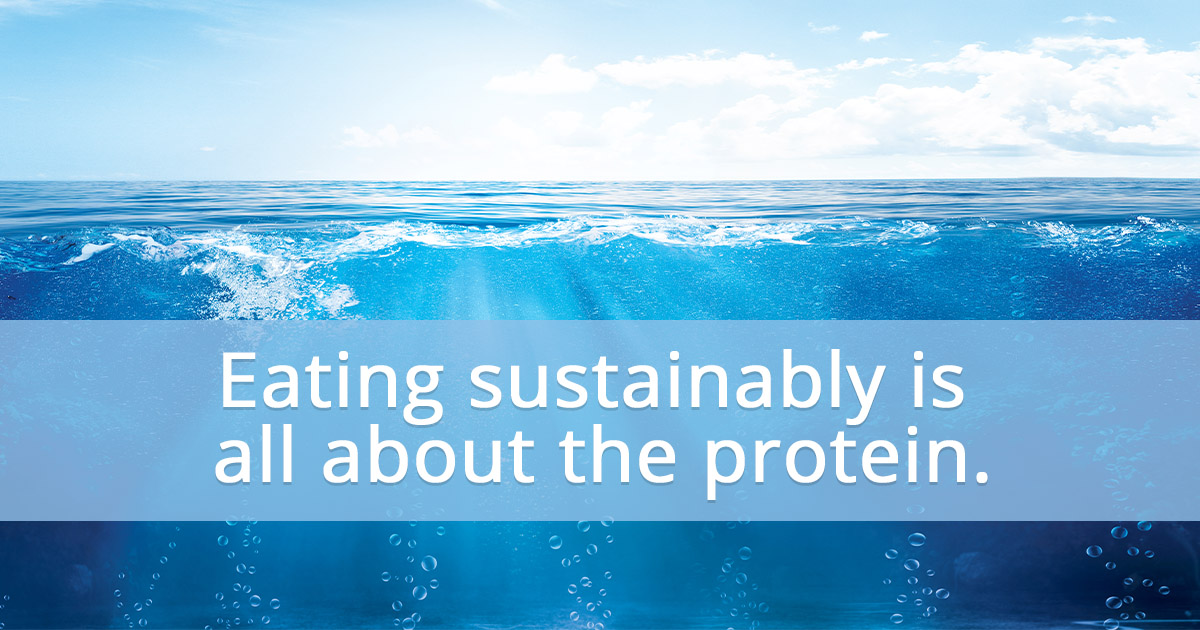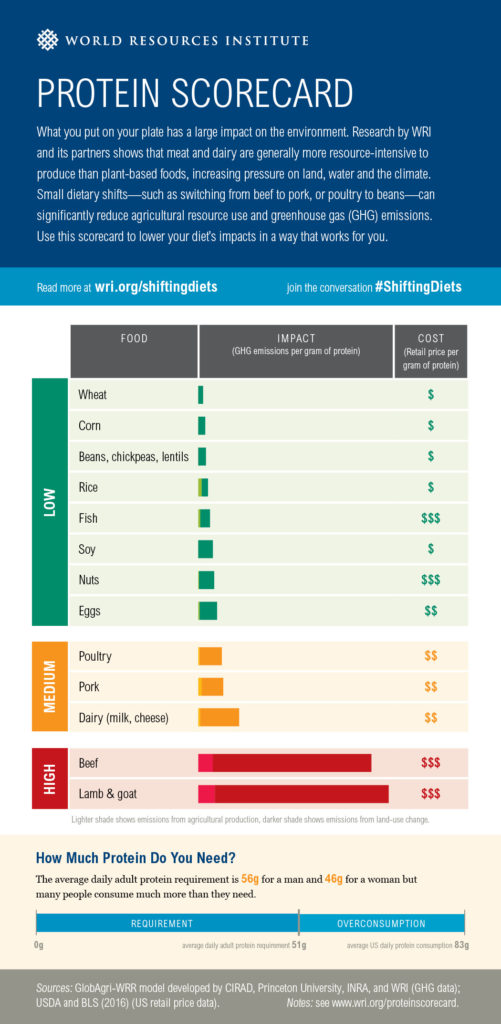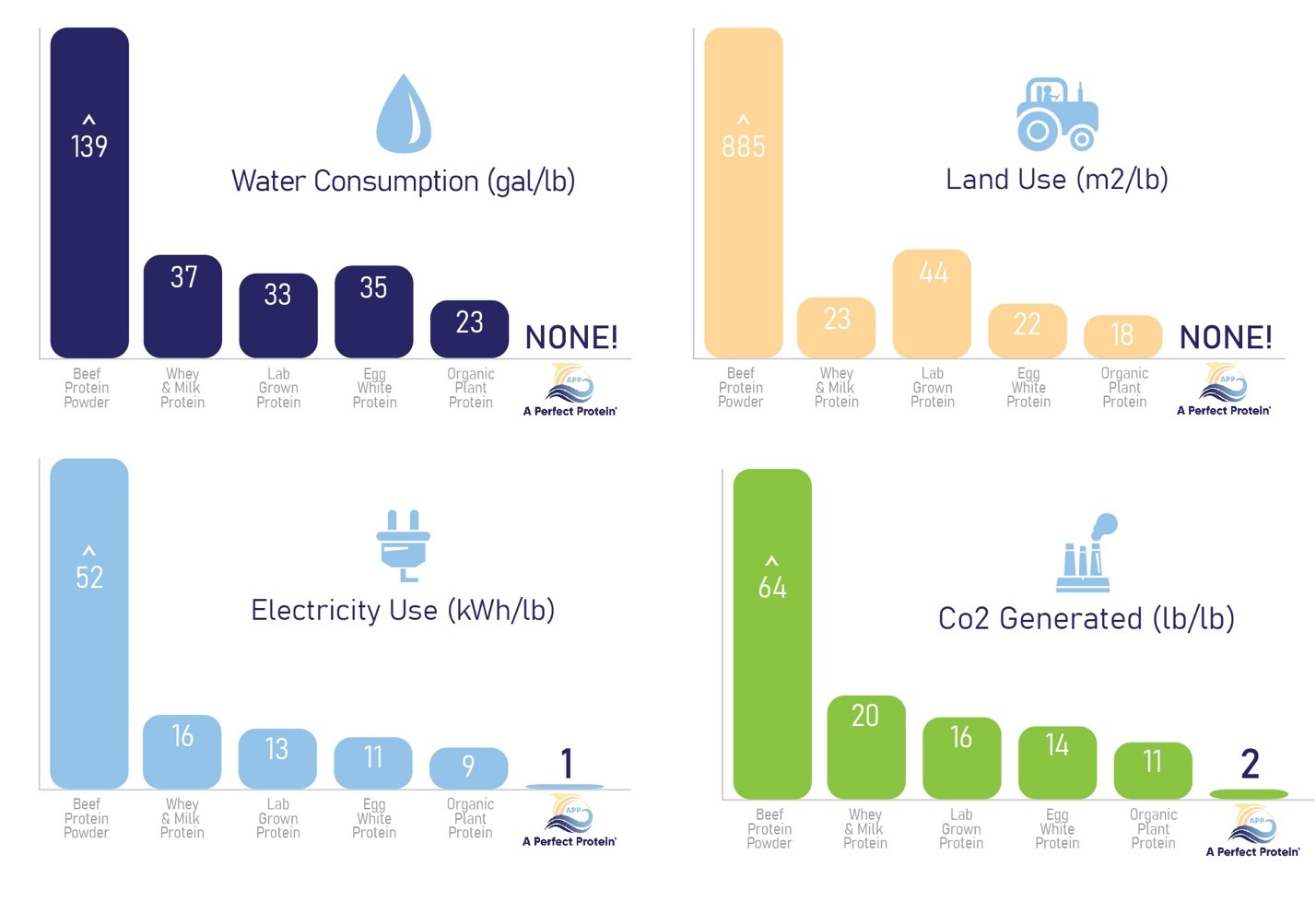
According to the latest peer-reviewed research, shifting to a more sustainable diet is the most consequential way people can reduce their planetary footprints.
Though food is a personal choice with many social and cultural aspects—dietary choices should never be dismissed or shamed—consuming food consciously is an easy and meaningful way to help the Earth.
A more sustainable diet means choosing foods with fewer climate change and ecosystem burdens. Simple choices, like eating beef one fewer time per week or switching to a lower-impact protein supplement can add up and make a difference.
But how do conscious consumers know what foods are sustainable?
Since it is the most impactful macronutrient, protein data is the most reliable way to judge a food’s sustainability.
Cow-based protein like beef and dairy is particularly harmful. Cows are ungulates, meaning they produce enormous quantities of methane (an especially potent greenhouse gas) while they eat. Take a look at the chart below—it compares the climate change emissions of different protein. Plants and fish score well.

Ecosystem effects, like pollution and habitat impacts are also important considerations when judging the sustainability of food. Food production uses over 90% of the planet’s fresh water and contributes significant pollution with farm runoff. Pesticides, fertilizer, and livestock manure washed away by rain contaminate our lakes, rivers, and oceans. A landmark study published earlier this year shows that eutrophication caused by fertilizer runoff is the most immediate existential threat to marine life.
Raising livestock and growing crops also requires vast amounts of land. Terrestrial food production occupies half of all habitable land on Earth and continues to increase at an unsustainable pace: Beef production is the largest driver of deforestation in the world. Land and freshwater are both precious limited resources—conserving them for future generations is paramount.
Fish is the best source of protein for the planet.
Wild-caught fish require no land, fertilizer, pesticides, or fresh water. When harvested sustainably, fish are the lowest-impact protein you can buy.
The most comprehensive research on the environmental impacts of animal protein concluded that wild-caught seafood has the lowest carbon footprint and lowest eutrophication potential compared to all land animal protein and farm-raised seafood. However, with so many different kinds of fish, there is some variance in impacts. For example, crab and lobster boats need to constantly start and stop their engines to lay lobster traps—all that stopping and starting burns more fuel per gram of protein produced than an anchovy boat that can scoop up a ton of fish in one net set.
We use Pacific whiting in our protein. It is the most abundant fish on the West Coast and lives relatively close to shore so fishermen don’t burn much fuel to harvest it. Furthermore, our processing facility is also on the West Coast so our products have very low food miles. The Pacific whiting fishery has been sustainable for decades and is continually managed by NOAA so it will stay that way. We are committed to only using 100% sustainable fish in our protein products.

